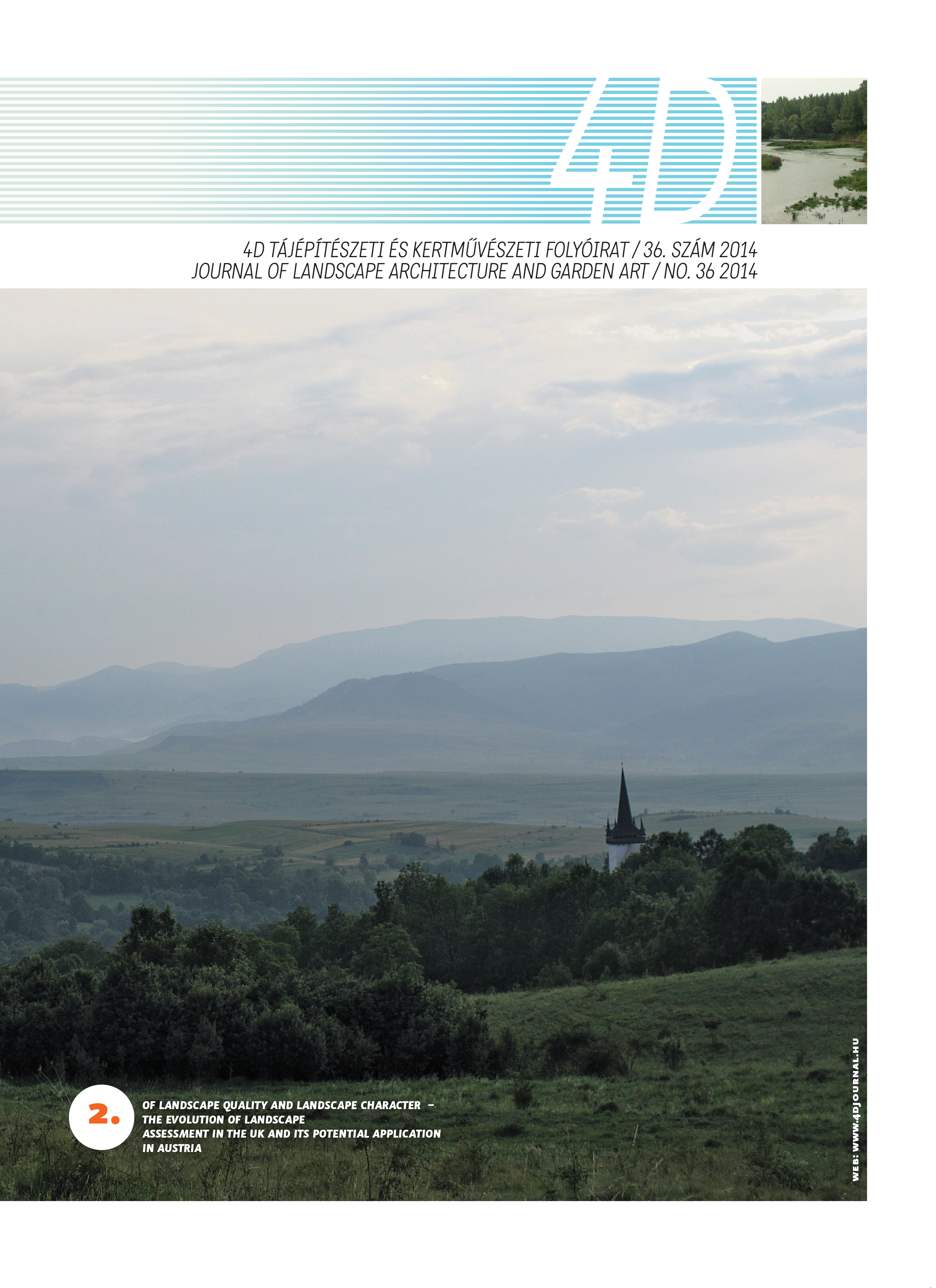Landscape assessment for landscape planning in Germany
Keywords:
lanscape assesment, landscape planning, landscape character, landscape ecology, diversity indexAbstract
German landscape planners have, despite Germany’s long and distinguished tradition of distinctive landscape thinking, developed no direct equivalent of the Landscape Character Assessment (LCA) approach. Instead there exist, on the one hand, a strong focus on natural environment and diversity and special areas, and on the other a number of approaches frequently labelled ‘Landschaftsbild’. The term and concept of Landschaftsbild refers to visual aspects of a Landschaft. Practical landscape assessments are produced that inform and guide planning, design and management. This chapter explores and analyses such ‘Landschaftsbild’ approaches. The one overarching rule that all, administrators and practitioners, have to follow in the contexts of statutory landscape planning is that of the Federal Nature Conservation Act.
References
Naveh, Z., Liebermann, A.S. (1984) Landscape Ecology: Theory and Application. Springer, New York.
Kiemstedt, H. (1967) Zur Bewertung natürlicher Landschaftselemente für die Planung von Erholungsgebieten. Jänecke, Hannover (In German).
Roth, M. (2012) Landschaftsbildbewertung in der Landschaftsplanung. Entwicklung und Anwendung einer Methode zur Validierung von Verfahren zur Bewertung des Landschaftsbildes durch internetgestützte Nutzerbefragungen. Berlin: Rhombos-Verlag p.84
Roth, M. (2012) Landschaftsbildbewertung in der Landschaftsplanung. Entwicklung und Anwendung einer Methode zur Validierung von Verfahren zur Bewertung des Landschaftsbildes durch internetgestützte Nutzerbefragungen. Berlin: Rhombos-Verlag.pp. 73-86.
Buchholz 2014: http://www.lubw.baden-wuerttemberg.de/servlet/is/240091/naturschutz_info_2014_1.pdf?command=downloadContent&filename=naturschutz_info_2014_1.pdf - 16.12.2014 p. 57.
Roser, F. (2013) Ist die Schönheit der Landschaft berechenbar? Naturschutz und Landschaftsplanung 45(9/2013): 265-270.
Roth, M., Gruehn, D. (2010) Modellierung von Vielfalt, Eigenart und Schönheit von Natur und Landschaft; Naturschutz und Landschaftsplanung 42(4/2010): 115-120.
Roth, M. (2012) Landschaftsbildbewertung in der Landschaftsplanung. Entwicklung und Anwendung einer Methode zur Validierung von Verfahren zur Bewertung des Landschaftsbildes durch internetgestützte Nutzerbefragungen. Berlin: Rhombos-Verlag
Peters, J.; Torkler, F.; Hempp, S.; Hauswirth, M. (2009) Ist das Landschaftsbild "berechenbar"? Entwicklung einer GIS-gestützten Landschaftsbildanalyse für die Region Uckermark-Barnim als Grundlage für die Ausweisung von Windeignungsgebieten. In: Naturschutz und Landschaftsplanung 41 (1), S. 15–20.
Roser, F. (2013) Ist die Schönheit der Landschaft berechenbar? Naturschutz und Landschaftsplanung 45(9/2013): 265-270.
Fry, G., Tveit, M.S., Ode, A., Velarde, M.D. (2009) The ecology of visual landscapes: Exploring the conceptual common ground of visual and ecological landscape indicators, Ecological Indicators, 9(5): 933–947.
Swensen, G., Jerpåsen, G. B., Sæter, O., Tveit, M. S. (2013) Capturing the Intangible and Tangible Aspects of Heritage: Personal versus Official Perspectives in Cultural Heritage Mana gement. Landscape Research, 38(2), 203–221
Stemmer, B. (2014) Kooperative Landschaftsbewertung in der räumlichen Planung; sozialkonstruktivistische Theorie als Grundlage einer Herangehensweise zur Mitwirkung der Öffentlichkeit bei der Bewertung von Landschaften. Doctoral Thesis, Kassel University.
Olwig, K. R. (2007) The practice of landscape ‘conventions’ and the just landscape: The case of the European Landscape Convention, Landscape Rese arch, 32(5), 579–594.
Downloads
Published
Issue
Section
License
Copyright (c) 2024 Prof. Dr. Diedrich Bruns

This work is licensed under a Creative Commons Attribution-NonCommercial-NoDerivatives 4.0 International License.
A folyóirat Open Access (Gold). Cikkeire a Creative Commons 4.0 standard licenc alábbi típusa vonatkozik: CC-BY-NC-ND-4.0. Ennek értelmében a mű szabadon másolható, terjeszthető, bemutatható és előadható, azonban nem használható fel kereskedelmi célokra (NC), továbbá nem módosítható és nem készíthető belőle átdolgozás, származékos mű (ND). A licenc alapján a szerző vagy a jogosult által meghatározott módon fel kell tüntetni a szerző nevét és a szerzői mű címét (BY).



